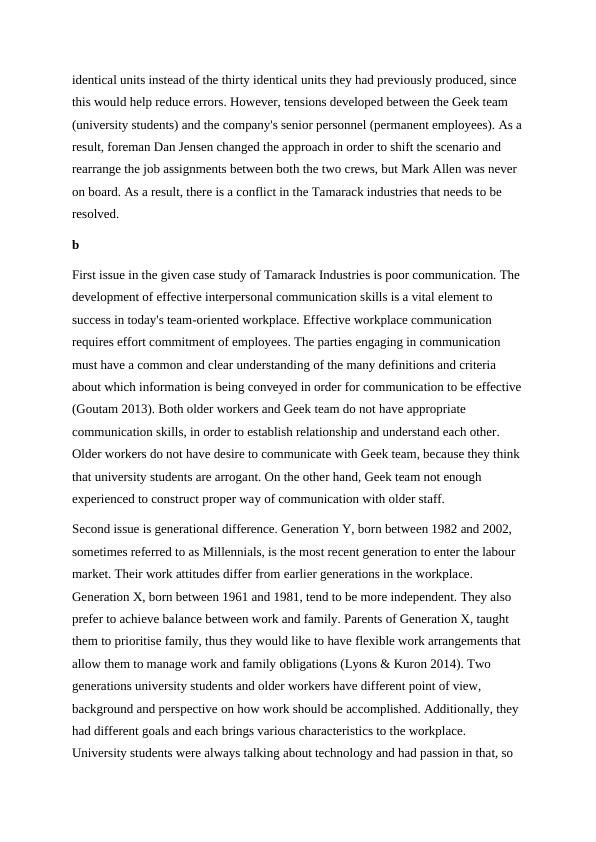Organizational Behavior | Tamarack Industries Case Study
7 Pages2141 Words178 Views
Added on 2022-07-07
About This Document
In this article, we'll look at the case study, in which Tamarack Industry, created by Brigham Young University's David J Cherrington, is challenged with workplace organizational behaviors. This includes poor communication, generational difference, and there are no defined regulations and no correct conduct. Theories and recommendations included are - to organize a communication workshop and establish a space for many forms of communication, etc.
Organizational Behavior | Tamarack Industries Case Study
Added on 2022-07-07
ShareRelated Documents
End of preview
Want to access all the pages? Upload your documents or become a member.
Conflict Management at Places of Work
|10
|2631
|137
Role of Conflict Management and Coaching Techniques in Resolving Conflict
|12
|2678
|89
Causes of Conflict in Workplace Assignment
|13
|3942
|650
Skills for Higher Education
|7
|1853
|60
Report on Negotiation and Conflict Resolution
|14
|2865
|266
MGMT20129 Concepts of Conflict and Negotiation - Report
|9
|1763
|153



